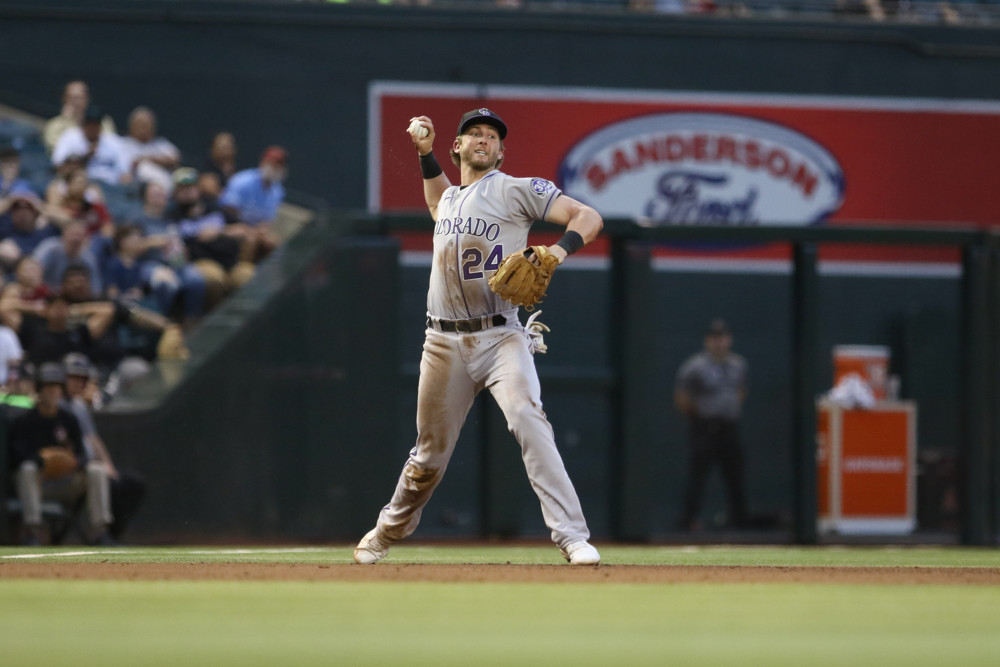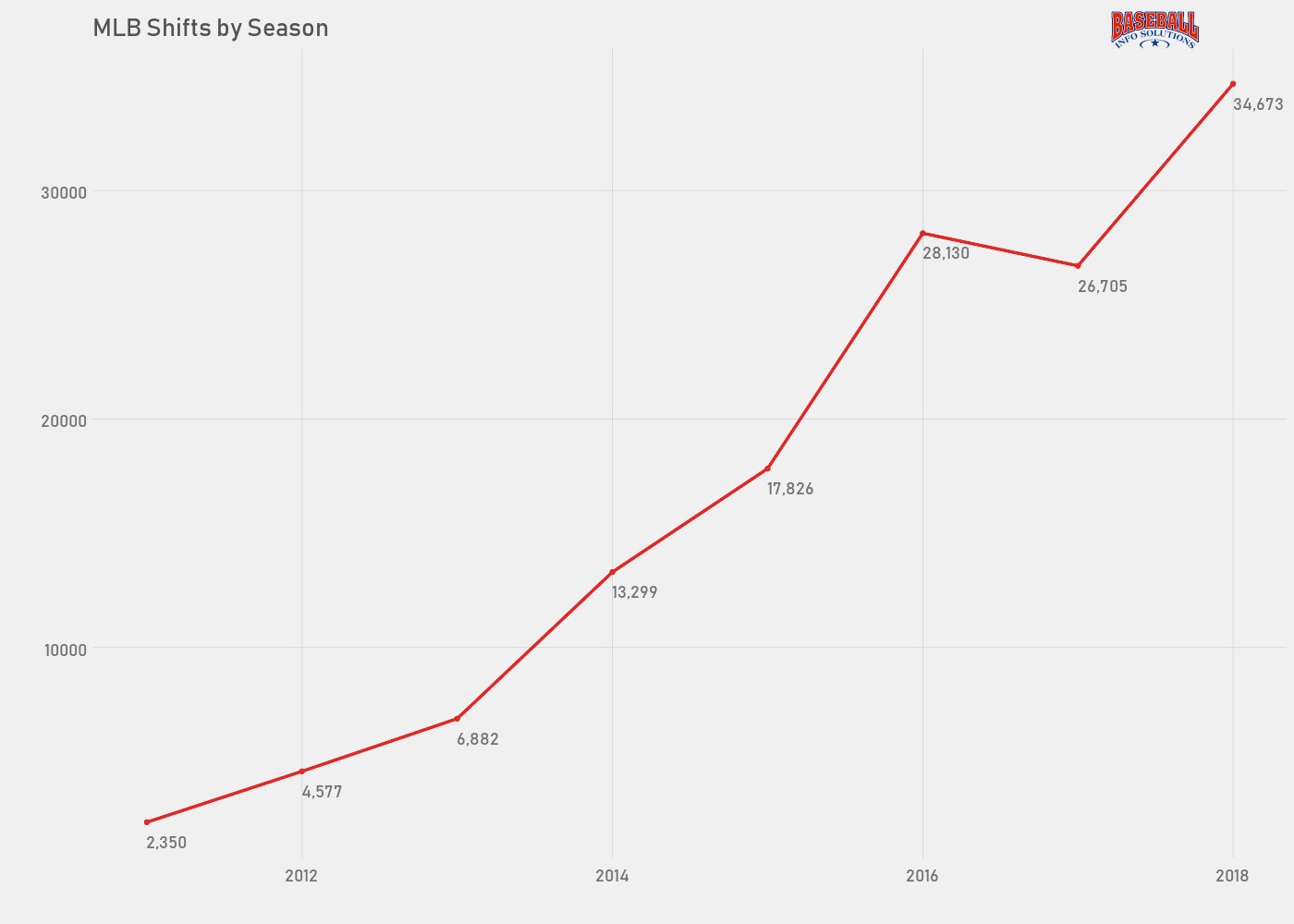By MARK SIMON
There was an article in the Pittsburgh Post-Gazette last week, the gist of which was a couple of Pirates players wondering why center fielder Bryan Reynolds’ Defensive Runs Saved total was so low (-2 runs entering Monday).
This is a common question, one we seem to get more on center fielders than any other position. We get it. Everyone thinks their center fielder is a good center fielder, if not the best one, because center fielders are great athletes who often make extraordinary plays in the field. Almost every center fielder looks good.
But in the world of Defensive Runs Saved, not everyone can be the best center fielder, or even rate in the top 10. The stat maintains order, just as it does at every other position, grading the entirety of each position on a curve.
Reynolds’ history is that of a good outfielder. He had 7 Runs Saved in 116 games in left field, 3 Runs Saved in 42 games in center field and 3 Runs Saved in 31 games in right field.
Here is a breakdown from the Fielding Bible website.
In 2021, Reynolds has played 90 games in center field and 17 games in left field (where he’s at 0 Runs Saved). Given the sample sizes, we’ll focus on center field.
You can find a nice breakdown of Reynolds’ defensive performance on the Fielding Bible site.

There are a lot of numbers here. We’ll try to focus on the important ones.
You can see under the Runs Saved header that as a center fielder in 2021 Reynolds is at -1 for R&P (Range & Positioning), -2 for Throws, and +1 for GFP/DME (Good Fielding Plays & Defensive Misplays), giving him a total of -2 Runs Saved.
Reynolds’ Range
We can split things up even further into shallow, medium, and deep categories, indicating how well a player did on balls hit to those parts of the field.
Reynolds is +8 on shallow fly balls. That’s great. In fact, it’s the best of any center fielder in baseball.
Reynolds has gotten there by making plays like this. He gets a .83 credit to his “shallow” rating for making a catch on this ball, which had 17% out probability.
There have been 80 balls classified as shallow on which Reynolds had a >0 chance of making the catch. He’s turned 61 of those into outs. By our calculations, the average outfielder would have caught 53 of them.
61 minus 53 equals 8, so that is where that +8 rating comes from.
Alas, most of those balls have high probabilities of being singles, so while they help Reynolds’ Runs Saved total some, the conversion from Plays Saved to Runs Saved gives him relatively little credit compared to deeper plays.
And the -5 plays saved under “Deep” offsets those shallow-ball successes.
Here are three examples balls hit to deep center that Reynolds couldn’t quite catch.
Defensive Runs Saved doesn’t award any sort of consolation points for being close to catching a ball. It’s all or nothing. You either make the play or you don’t. And every play counts.
Michael A. Taylor probably would have caught some of them. So would Kevin Kiermaier, Harrison Bader, Jackie Bradley Jr. and some of the other outfielders who rate as standouts on deep fly balls.
Again, the grading curve in center field is steeper than in left or right because there are so many good players.
Reynolds is 66-of-93 on catching deep balls. By our calculations, the average center fielder would have caught 71 of them.
66 minus 71 equals -5, which gives you his Plays Saved on Deep fly balls and line drives. The -5 is tied for the second-worst of any center fielder in MLB.
Most Plays Saved on Deep Balls, 2021 Center Fielders
| Player | Team | Plays Saved |
| Jackie Bradley Jr. | Brewers | +7 |
| Harrison Bader | Cardinals | +6 |
| Kevin Kiermaier | Rays | +6 |
| Michael A. Taylor | Royals | +5 |
| Byron Buxton | Twins | +4 |
| Myles Straw | Cleveland | +4 |
The conversion of Plays Saved to Runs Saved on deep flies and liners hurts Reynolds more than the positive conversion on shallow flies and liners helped him. Those plays missed hurt a player’s Runs Saved total, because they result in doubles and triples and have a higher penalty than the shallow plays do.
Though Reynolds Plays Saved of +8 on shallow balls, 0 on medium balls, and -5 on deep balls adds up to +3, it converts to -1 Range Runs Saved. That’s just below MLB average.
What could be the issue here?
Specific to Reynolds and his not making these plays, we noticed this:
On Statcast’s leaderboards that measure outfielder jumps, Reynolds ranks fifth-worst in terms of ground covered within the first 1.5 seconds after the ball hits the bat (known in Statcast terminology as “burst”).
On defense, every millisecond and every inch counts. Though Reynolds rates above average in the other Statcast components, it’s tough to make up for bad initial jumps on balls.
We also checked in on the depth at which he plays, because unsurprisingly if you play shallower you’ll make more shallow plays and fewer deep plays. But this year Reynolds is actually playing deeper than in 2020, and similar to where he played in 2019 if we compare specifically to PNC Park.
A disappointing Runs Saved total isn’t surprising
That Reynolds’ numbers aren’t as good as they were when he was an everyday left fielder isn’t that much of a surprise.
Our Andrew Kyne studied positional changes by outfielders and found that the average change for a corner outfielder moving to center field was a 7-run drop in Defensive Runs Saved (you can read his study here). That’s not as much about the player getting worse as his peers in center field being better than left fielders as a whole.
Throws and other items
I’ll address a couple other numbers here.
Reynolds is at -2 Runs Saved for throws because runners have taken an extra base on him 44 times in 68 opportunities.
That’s a 65% advance rate against an MLB average of 55% for center fielders.
That’s not good.
Factoring in Reynolds’ two assists without a cutoff man helps a little, but still puts him at -2 Runs Saved for his outfield arm.
The 1 Run Saved Reynolds records for Good Fielding Plays/Defensive Misplays & Errors measures a number of things, the most important of which in this case were this home run robbing catch against Tyler Naquin and four instances in which Reynolds didn’t cleanly handle balls hit off the wall.
Summary
These are some of the takeaways you should have from reading this article.
1) Bryan Reynolds rates well at fielding shallow fly balls this season.
2) Bryan Reynolds rates poorly at fielding deep fly balls this season.
3) Rating poorly on deep balls hurts a player’s defensive stats more than rating well on shallow ones helps them.
4) Reynolds’ Runs Saved may be a product of his not reacting quickly to balls off the bat.
5) More baserunners are advancing against Reynolds than an average center fielder.
Is there a player whose defense you’d like us to dissect more closely?
Tweet at us at @SportsInfo_SIS and we’ll see what we can do.


